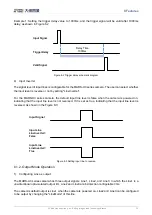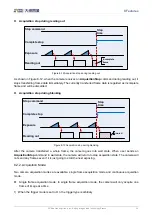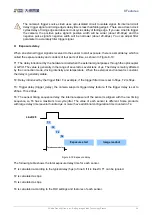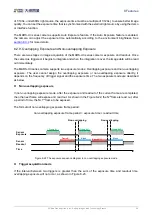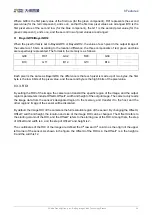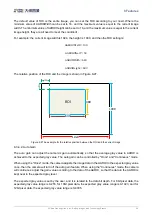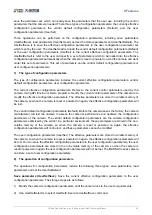
8.Features
© China Daheng Group, Inc. Beijing Image Vision Technology Branch 47
Exposure time
Readout time
Exposure line by line
Readout after exposure
Reading
Time
Exposing
Figure 8-21 Electronic rolling shutter
The implementation process of electronic rolling shutter is as shown in Figure 8-21, different from the
global shutter, electronic rolling shutter exposures from the first line, and starts the second line exposure
after a row period. And so on, after N-1 line, the N line starts exposing. When the first line exposure ends,
it begins to read out the data, and it need a row period time to read out one line (including the line blanking
time). When the first line reads out completely, the second line just begins to read out, and so on, when
the N-1 line is read out, the N line begins to read out, until the whole image is read out completely.
The electronic rolling shutter has low price and high resolution, which is a good choice for some static
image acquisition.
The time width of the flash signal can be got by the following formula:
T
𝑠𝑡𝑟𝑜𝑏𝑒
= T
𝑒𝑥𝑝𝑜𝑠𝑢𝑟𝑒
− (𝑁 − 1) ∗ T
𝑟𝑜𝑤
Setting the exposure time
The MARS-U3
series camera supports setting the exposure time, step: 1μs. The exposure time is shown
as follows:
Model
Exposure Mode
Adjustment Range
(μs)
Steps
(μs)
Actual Steps
MARS-1230-23U3M/C
Global Shutter
24-1000000
1
1 row period
MARS-1231-32U3M/C
Global Shutter
28-1000000
1
1 row period
Table 8-3 MARS-U3 series camera exposure time setting range
The exposure precision of the camera is limited by the sensor, when the steps in the user's interface and
the demo display as 1μs, actually the steps
are one row period. When the value of the ExposureTime
cannot be divisible by the row period, round up to an integer should be taken, such as the row period is
36us, setting exposure time to 80us, and the actual exposure time is 108us.
When the external light source is sunlight or direct current (DC), the camera has no special requirements
for the exposure time. When the external light source is alternating current (AC), the exposure time must
synchronize with the external light source (under 50Hz light source, the exposure time must be a multiple

